Photos: JTBC PLUS/ImaZinS Editorial; RB/Bauer-Griffin/GC Images; Emma McIntyre/Getty Images for Coachella; JTBC PLUS/ImaZinS Editorial
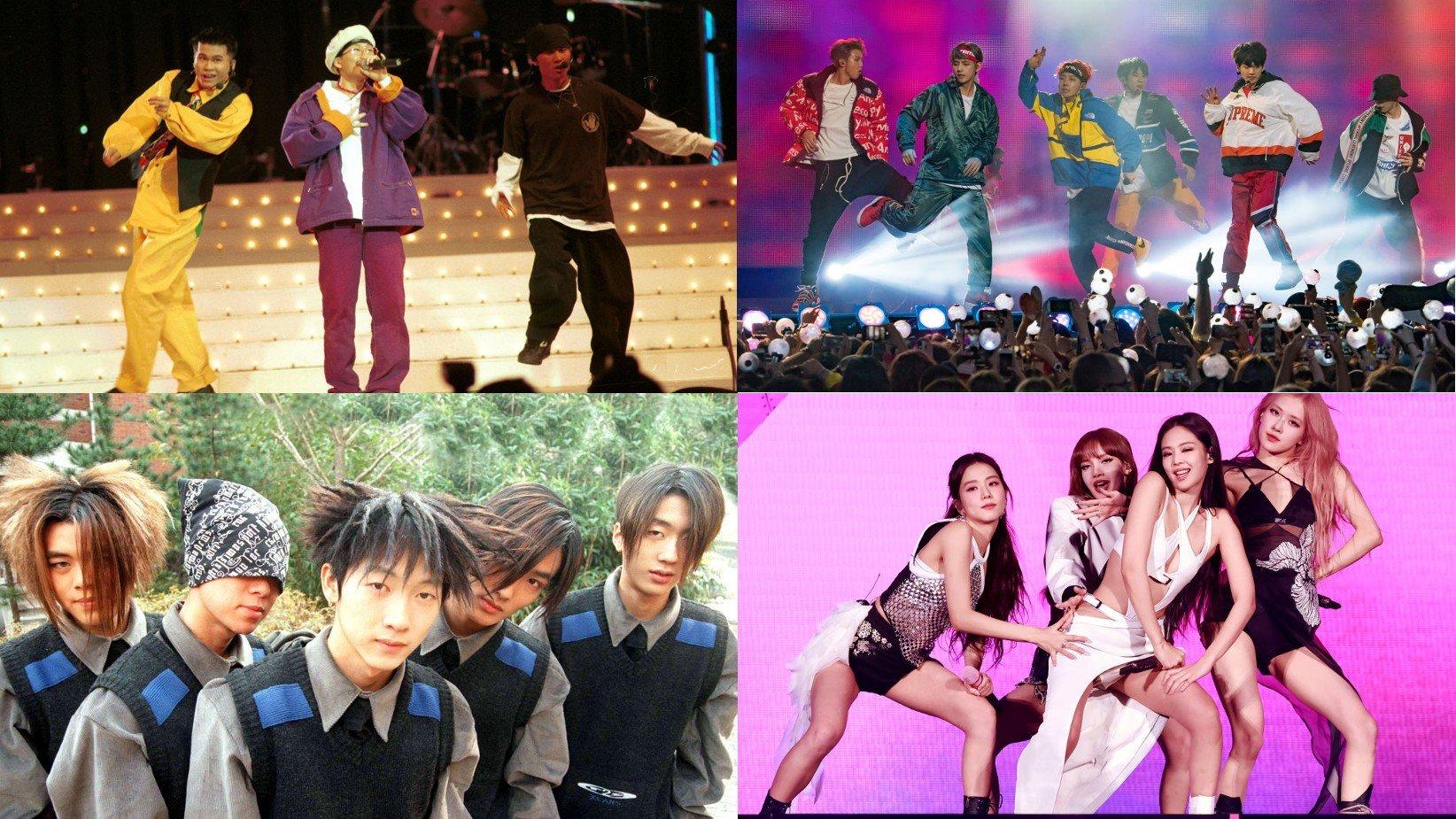
feature
K-Pop's Hip-Hop Roots: A History Of Cultural Connection On The Dancefloor
Although they might seem like disparate genres today, K-pop and hip-hop go way back. In honor of hip-hop's golden anniversary and K-pop's ever-growing popularity, GRAMMY.com explores the links between the sounds.
Although they might seem like disparate genres today, K-pop and hip-hop go way back. Their link can be traced to a single nightclub in Korea: Moon Night.
Located in Seoul's Itaewon neighborhood, Moon Night wasn't particularly remarkable among the many other bars catering to tourists and American servicemen at the nearby military base. However, in the late '80s and early '90s, the club was ground zero for the genesis of the nation’s first K-pop group and the founding of the country’s "Big 3" music entertainment labels.
Moon Night is so crucial to the development of K-pop as we know it today because the club played music beloved by its target clientele: Americans. And in the midst of hip-hop's golden age, hip Korean audiences got hooked.
Over decades, that connection to hip-hop has developed and evolved to create the juggernaut that is contemporary K-pop. Today, the influence of hip-hop can be seen in K-pop dance, dress and even instrumentation.
Pioneering K-Pop On The Dancefloor
Where nightlife in Korea was long separated by nationality — Korean citizens had their own establishments, as did U.S. military personnel — a new kind of integrated club scene blossomed in the 1990s. For the first time, Koreans could legally patronize the same bars as American G.I.s.
Around 1 a.m., clubs like Moon Night would transition from a "normal Korean club" to a foreigner haven, recalls Dr. Michael Hurt, an Assistant Professor at the University of Suwon's International College.
That Moon Night became the Ur of K-pop as we know it was chiefly because Black American soldiers patronized the club, which played hip-hop. As Koreans and Black soldiers socialized, a new culture of hip-hop dance, or "rap dance," and music grew. Dr. Hurt experienced the eagerness with which young Koreans learned hip-hop moves while visiting Moon Night in the '90s.
Dr. Hurt — who is Black and Korean and has been living in country for various periods since the mid-'90s — recalls clubgoers asking to dance with him. They would follow along with every step. While hip-hop music was important to the progenitors of K-pop, Koreans at the time were most fascinated by dance moves, and the emphasis on dance remains an important aspect of K-pop today.
By the early '90s, hip-hop had begun to egress its original audience and evolve into a new form. The cross-cultural connection happening at Moon Night was replicated across Seoul; Dr. Hurt notes that Koreans and Black Americans also found common musical interest at Blue Monkey in Sincheon and Golden Helmet in Hongdae.
Future K-pop heavy hitters like Yang Hyun-suk of YG Entertainment, Park Jin-young of JYP Entertainment, and Lee Soo-man of SM Entertainment were rumored to have patronized Moon Night. However, Dr. Hurt theorizes that if they were in the club scene they also visited other places too.
K-Pop's First Generation Of Stars: Born At Moon Night, Shared Online
While hip-hop was largely inaccessible to Koreans in the 1990s, there were always dedicated Korean listeners. This young, niche community consisted of members like Seo Taiji, who brought rap dance to the public and became K-pop's first stars.
Seo Taiji and Boys reportedly learned how to dance from Black American soldiers at Moon Night. (Yang Hyun-suk, who later on became the founder of YGE, and Lee Juno were the "and Boys" component of the trio.) Their example laid the groundwork for the second generation of K-pop stars.
"[Seo Taiji and Boys] were like gods on earth," recalls Dr. Hurt.
The members became the undisputed purveyors of hip-hop in Korea, utilizing American hip-hop, metal and punk to create a unique musical fusion. The practice of mixing and melding genres is the standard in K-pop to this day.
Seo Taiji and Boys' 1992 performance of "난 알아요 (I Know)" on a competitive TV show struck a chord with the nation's youth, effectively introducing hip-hop to the general public. The performance also filled a capacious hole left in the Korean music industry after the roll back of Emergency Measure No. 9 (which only allowed patriotic or "healthy" songs to be broadcast), which banned hundreds of songs from the likes of Bob Dylan, Johnny Cash and Eric Clapton. Therein, Seo and company brought a new sound to the previously restricted airwaves.
Still, a lesser-known idol predates Seo Taiji and Boys' rise by a couple of years. Once again, Moon Night remains in the backdrop.
If Seo Taiji and Boys is K-pop’s first idol group then Hyun Jin-Young is K-pop’s first solo artist. Though his career was brief, Hyun Jin-Young "is generally credited with bringing hip-hop to the mainstream in Korea," says Dr. Crystal Anderson, Associate Director of Engaged Learning and African and African American Studies at George Mason University. On hits like, "슬픈 마네킹 (Sad Mannequin)," Jin-young sang, rapped, and performed dance moves, such as the Roger Rabbit, over a hip-hop beat. "Without him, you wouldn't have [K-pop] idols, but at the same time, Seo Taiji showed that it could be lucrative and popular."
Artists like Hyun Jin-Young, Seo Taiji, and, later, H.O.T were at the forefront of Korea's "rap dance" scene in the mid-to-late '90s. At the turn of the century, hip-hop culture began to circulate even further via the internet.
"The young hip-hop community [in Korea] has always been pretty hardcore because they had to be to even get enough information to maintain community," Dr. Hurt notes. "[Things] like what are the new fashions, you had to be deep into it."
Youth were largely responsible for disseminating the burgeoning sound of K-pop. "Music is not becoming popular at church. It starts from some kid pirating a CD," says Kirsten Keels, a 2021 Fulbright Korea scholar.
Online, Koreans could explore hip-hop even further. In BTS’ book, Beyond The Story, RM recounted learning about hip-hop through interviews and documentaries about rappers posted on YouTube as a teen. His interest in hip-hop would later cause a ripple effect that would lead him to his current position in BTS.
"Legitimizing" Hip-Hop In K-Pop's Second Generation
By the second generation of K-pop, which roughly begins in 2003, the days of "rap dance" had fizzled out in favor of a distinct K-pop sound. However, hip-hop’s presence in the genre remains in the form of creating a designated rapper in each idol group.
Korean Americans also played a significant role in the "legitimization" of hip-hop and K-pop. "In the early days of K-pop, particularly with the idol groups, you would have one or more members who were Korean American. The idea was they were closer to the source material and therefore it was more authentic," says Dr. Anderson.
This rings true for K-pop groups like H.O.T — Lee Soo-man of SM Entertainment's first massively successful group — and 1TYM, which had Korean American members. Both groups have been cited as inspiration for groups like BTS and 2PM. H.O.T's successful formula became the blueprint for many K-pop groups. They industrialized the K-pop system, much as Motown developed its artists and hit-making processes.
Hip-Hop Artists And K-Pop Idols: Past And Present
Decades after its inception, K-pop and hip-hop acts continue to work together. In 2004, Snoop Dogg and Warren G hopped on Jinusean’s track, "2 All My People." The song's infectiously funky beat made the two rappers' appearance feel seamless.
In 2010, Kanye West was featured on JYJ’s "Ayy Girl" (West also appeared in the music video). And two years later, Psy, who has been a lifelong fan of M.C. Hammer, performed the rapper’s signature dance move next to him at the 2012 American Music Awards.
K-pop and hip-hop royalty came together in 2013 when BIGBANG’s G-Dragon and Missy Elliott gave a mesmerizing performance of "Niliria" on "M-countdown", a weekly music program broadcasted by M-net. It was a legendary moment in K-pop history because it brought together two highly respected rappers from different countries.
One group in particular has a slew of hip-hop collaborations – BTS. It doesn’t come with much surprise, since the septet’s CEO has openly stated "Black music is the base" of their musical identity. BTS and its members have collaborated with the likes of Nicki Minaj, J.Cole, Wale, Desiigner, Juice WRLD, and Lil Nas X (with whom they performed at the 2020 GRAMMYs). Recently, Jungkook, the youngest member of the group, made his solo debut with the song "Seven" featuring Southern rapper, Latto. The song hit No. 1 on the Billboard Hot 100.
In 2017, Jay-Z signed former 2PM leader Jay Park (who takes his name from the multi-GRAMMY winner) to Roc Nation. The following year, Park was seen at Roc Nation’s annual brunch where he snapped pictures with the likes of Beyoncé and Big Sean. His debut EP, Ask Bout Me, featured rappers such as 2 Chainz, Rich The Kid, and Vic Mensa.
Hip-hop’s influence on K-pop runs through the genre’s past, present and future. K-pop and hip-hop artists have always had moments of mutual respect. Even at the most unsuspecting times, the two genres have always found ways to collaborate.
Understanding Appropriation
However, the earnestness with which K-pop takes inspiration from hip-hop has understandably been questioned. The topic of cultural appropriation continues to be divisive, and unanimous consensus a rarity. "One person's appropriation isn't necessarily another person's appropriation," says Dr. Anderson.
Lately, the conversation around cultural appropriation in K-pop is commonly in relation to visual signifiers. Instances where K-pop idols have been in the hot seat include but are not limited to: ATEEZ’s Hongjoong wearing cornrows in promo images, BLACKPINK’s Lisa sporting box braids on multiple occasions, and MAMAMOO’s Hwasa donning a durag. While there's often swift backlash from fans, response from record labels is typically delayed — if they acknowledge the uproars at all.
In 2019 and 2020, respectively, former CLC member Sorn posted a picture of someone dressed in a mask that resembled a racist caricature, while Stray Kids' Hyunjin imitated a Korean cartoon character that was reportedly based on Black racial stereotypes. The latter eventually issued an official apology, while Sorn continued to get into hot water — most recently for a photoshoot where she flaunted an afro.
These recent cases are just repeat offenses of longstanding practices. In the '90s, JYPE Founder Park Jin-young put backup dancers in blackface and afros. The Bubble Sisters infamously wore blackface for their debut cover art and corresponding promo pictures in 2003.
BTS' J-Hope raised eyebrows with his remake of Webstar and Young B’s 2006 track "Chicken Noodle Soup." The 2019 track featured Becky G, while J-Hope appeared with a gelled hairstyle that resembled dreadlocks. While the look bordered on appropriation, Young B praised the song in an interview with Billboard.
"People of all cultures know the song," Young B said."[J-Hope and Becky G] made it even bigger for this day and age. I’m very open-minded and I feel like [the remake] is good for the culture. It was created in Harlem, and now it’s a worldwide thing."
"There’s a legit reason for people to be angry because aspects of African American culture have been and continue to be appropriated… the problem with Black popular culture is [it’s] so damn successful," Dr. Hurt says."[It’s] so hyper-successful that in a way you can't make restraining claims on it. I don't think it's at all realistic anymore."
Cases of appropriation can get harder to identify when there seems to be no clear signs of foul
play. RAIN and J.Y. Park’s 2020 duet, "Switch To Me," is redolent of Bobby Brown’s 1988 tune, "Every Little Step." The beat, clothing, and dance moves show that Park Jin-young was inspired by Brown.
"My baseline for a negative appropriation and misappropriation is a racial performance that mocks or demeans," Dr. Anderson adds. "We need to recognize that there's another perspective, not necessarily to excuse some of the more egregious cases of negative appropriation,. We can't use our American racial lens and just put it over this thing and have it make sense because there are other factors at play."
Sometimes the boundaries are pushed too far and are met with legal contention. In 2004, first-generation K-pop group Baby V.O.X released "Xcstasy," utilizing a freestyle Tupac made while incarcerated. The group’s label founder, Yoon Deung Ryong, vehemently denied the rumors that they illegally used the late rapper’s voice and likeness. However, reports from that time failed to corroborate their label’s defenses. In 2020, "Cupid Shuffle" singer Bryson Bernard accused and threatened to sue K-pop group Seventeen for their song "Left & Right" which sounded comparable to his 2007 hit.
Over the past three decades, hip-hop has become part of Korea’s public consciousness resulting in the K-pop we see and hear today. The spark that Black American GIs, Seo Taiji, and hip-hop-loving Korean youth lit has exploded into a billion dollar industry. Although it can come at the cost of misappropriation and well-meaning appreciation, it ultimately shows the influence of hip-hop and Black popular music around the world.
What's Next For K-Pop? A Roundtable Unpacks The Genre's Past, Present And Future
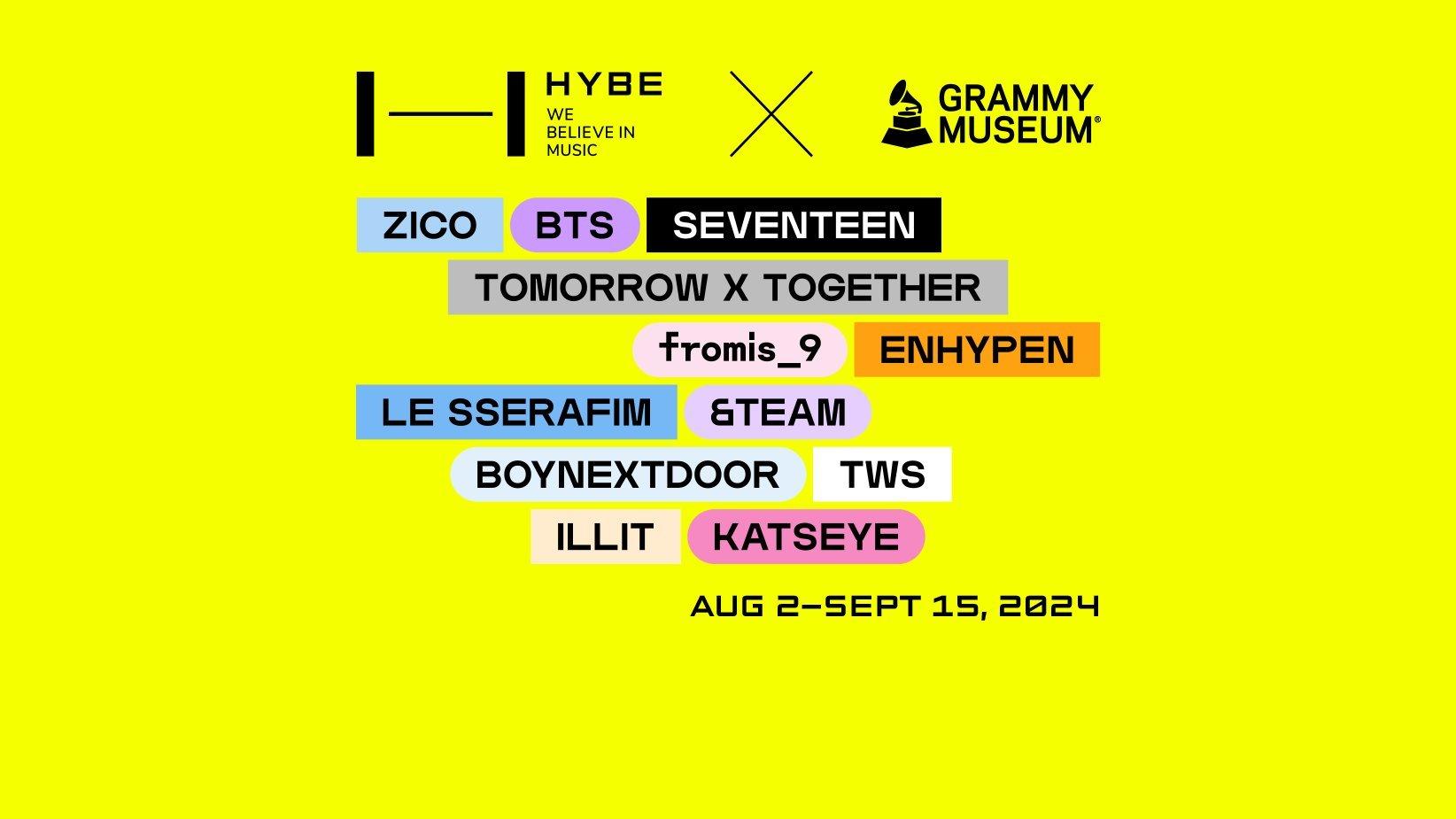
Graphic courtesy of the GRAMMY Museum
news
GRAMMY Museum Partners With HYBE For New K-Pop Exhibit 'HYBE: We Believe In Music' Opening Aug. 2
Running Aug. 2 through Sept. 15, the GRAMMY Museum exhibit showcases artifacts from superstar HYBE artists, including BTS, SEVENTEEN, TOMORROW X TOGETHER, ENHYPEN, LE SSERAFIM, and many more.
The GRAMMY Museum joins forces with HYBE to present its newest exhibit, HYBE: We Believe In Music, A GRAMMY Museum Exhibit. This interactive exhibit chronicles the history and impact of HYBE, and showcases its legacy of unparalleled innovation and creativity as a trend-setting global entertainment brand.
The exhibit opens on Aug. 2 in downtown Los Angeles and features spotlight moments with K-pop stars BTS, SEVENTEEN, TOMORROW X TOGETHER, ENHYPEN, LE SSERAFIM, and many more. "HYBE: We Believe In Music" runs through Sept.15. The exhibit will kick off on Aug. 1 with "Global Spin Live: TWS," a program featuring a moderated conversation with K-pop group TWS, followed by a performance.
The exhibit traces HYBE's evolution and influence by showcasing instantly recognizable artifacts from its roster of artists, creators, and fans. The displays notably feature original outfits worn in iconic music videos such as "Yet To Come (The Most Beautiful Moment)" by BTS, "MAESTRO" by SEVENTEEN, "Sugar Rush Ride" by TOMORROW X TOGETHER, "Sweet Venom" by ENHYPEN, and "EASY" by LE SSERAFIM. HYBE: We Believe In Music also boasts accessories and performance gear donned by ZICO, fromis_9, BOYNEXTDOOR, TWS, &TEAM, and ILLIT. The exhibit marks the first time these artifacts will be on display together in one location.
Other highlights include interactive sing-along and dance rooms, a dedicated Fan Section celebrating the endless support between HYBE artists and their fandoms, a Mono to Immersive room featuring BTS's 2022 GRAMMYs performance of "Butter," and a Photoism Booth that allows visitors to pose alongside their favorite K-pop artists. The GRAMMY Museum exhibit will also feature exclusive video content with producers, artists, music videos, and more.
"HYBE and their artists represent the present and future of the global music landscape, and our goal with this exhibit is to deepen the appreciation and respect for its creators and performers," says Michael Sticka, President/CEO of the GRAMMY Museum. "HYBE has contributed to creating a playground of innovation that inspires fandoms that transcend age, gender, geography and beyond. The GRAMMY Museum is thrilled to provide a space where fans can express their love for K-pop and feel closer to their favorite idols."
Read more: 11 Rookie K-Pop Acts To Know In 2024: NCT Wish, RIIZE, Kiss Of Life & More
HYBE Chief Operating Officer Taeho Kim added, "Putting out an exhibition that captures HYBE's journey is a new experience for us. We're very excited about this partnership with GRAMMY Museum, and we look forward to welcoming music fans who visit the museum to enjoy and connect with our historical pieces."
The exhibit highlights the roots of HYBE's meteoric rise. In 2005, South Korean producer, composer, and songwriter Bang Si-Hyuk, known as "hitman" Bang, changed the trajectory of Korean pop music by launching the record label Big Hit Entertainment. He soon signed a talented 16-year-old rapper named RM, which became the first step in creating the label's groundbreaking boy band — BTS. With the group's global success, "hitman" Bang and Big Hit Entertainment became known as musical trailblazers and record industry innovators. Big Hit Entertainment has now evolved into HYBE, which only continues to break boundaries in music and beyond.
More K-Pop News

NCT 127 Essential Songs: 15 Tracks You Need To Know From The K-Pop Juggernauts
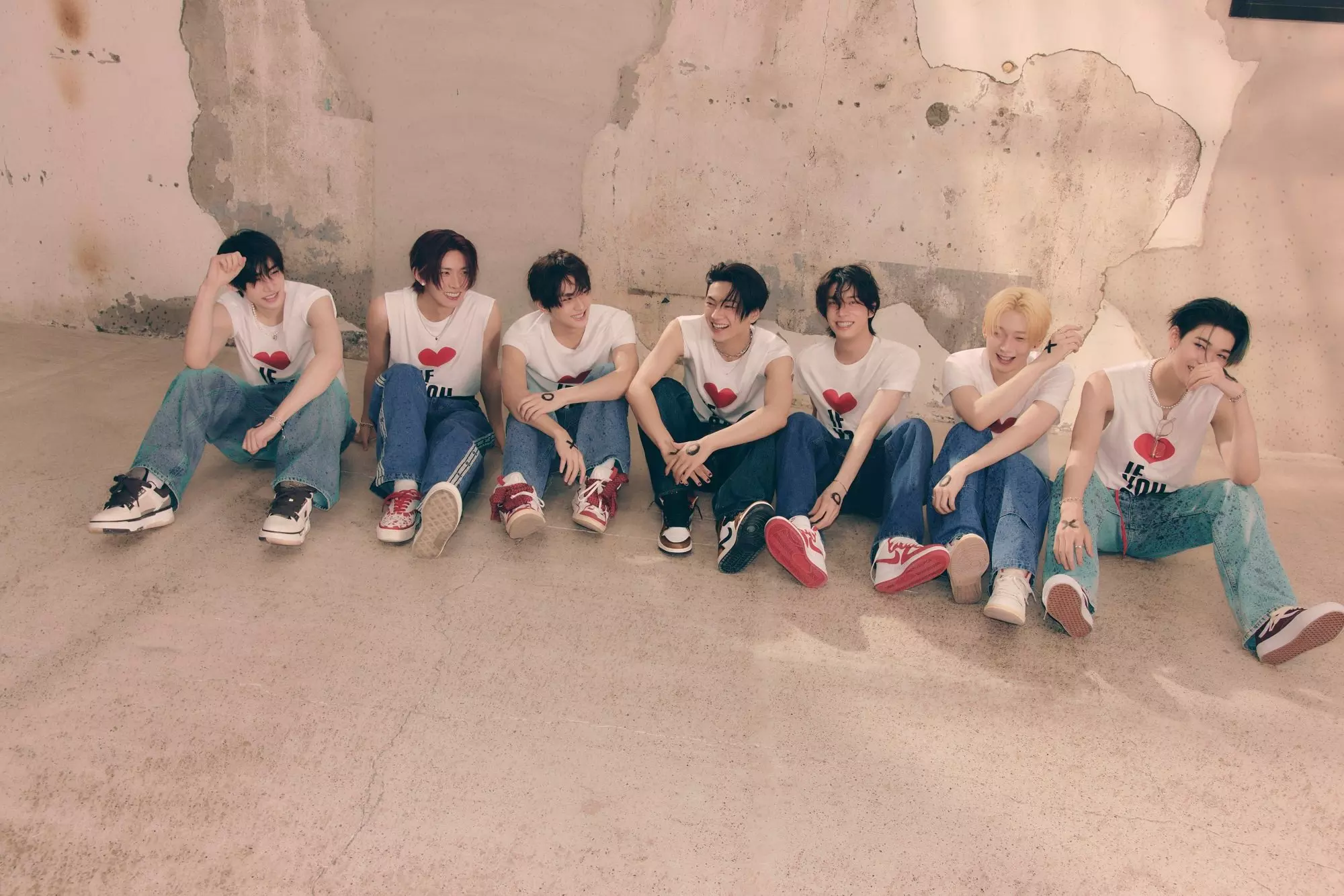
ENHYPEN And JVKE "Say Yes" To Cross-Cultural Collabs & Exploring New Genres
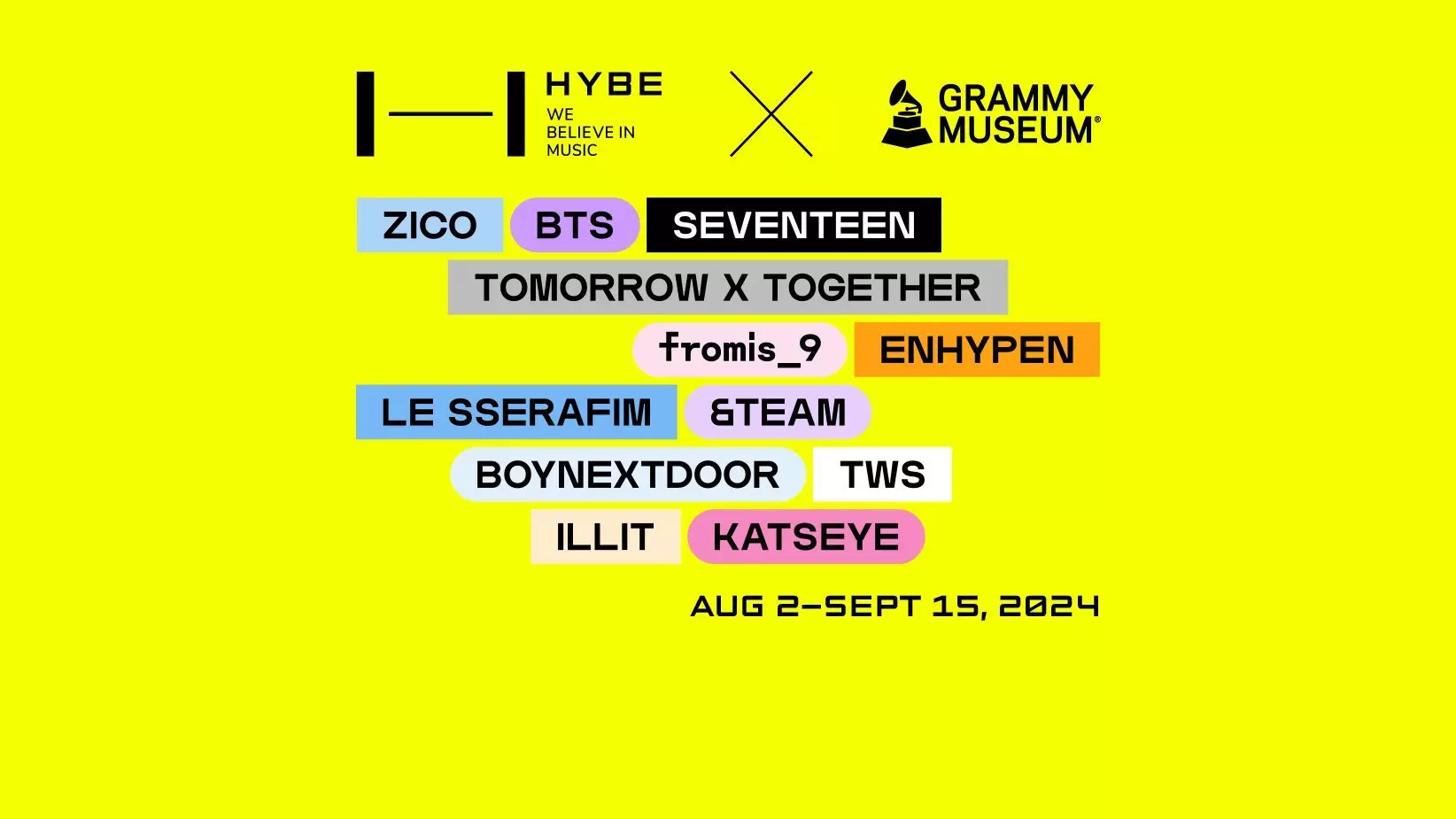
GRAMMY Museum Partners With HYBE For New K-Pop Exhibit 'HYBE: We Believe In Music' Opening Aug. 2

K-Pop Group RIIZE Detail Every Track On New Compilation 'RIIZING – The 1st Mini Album'
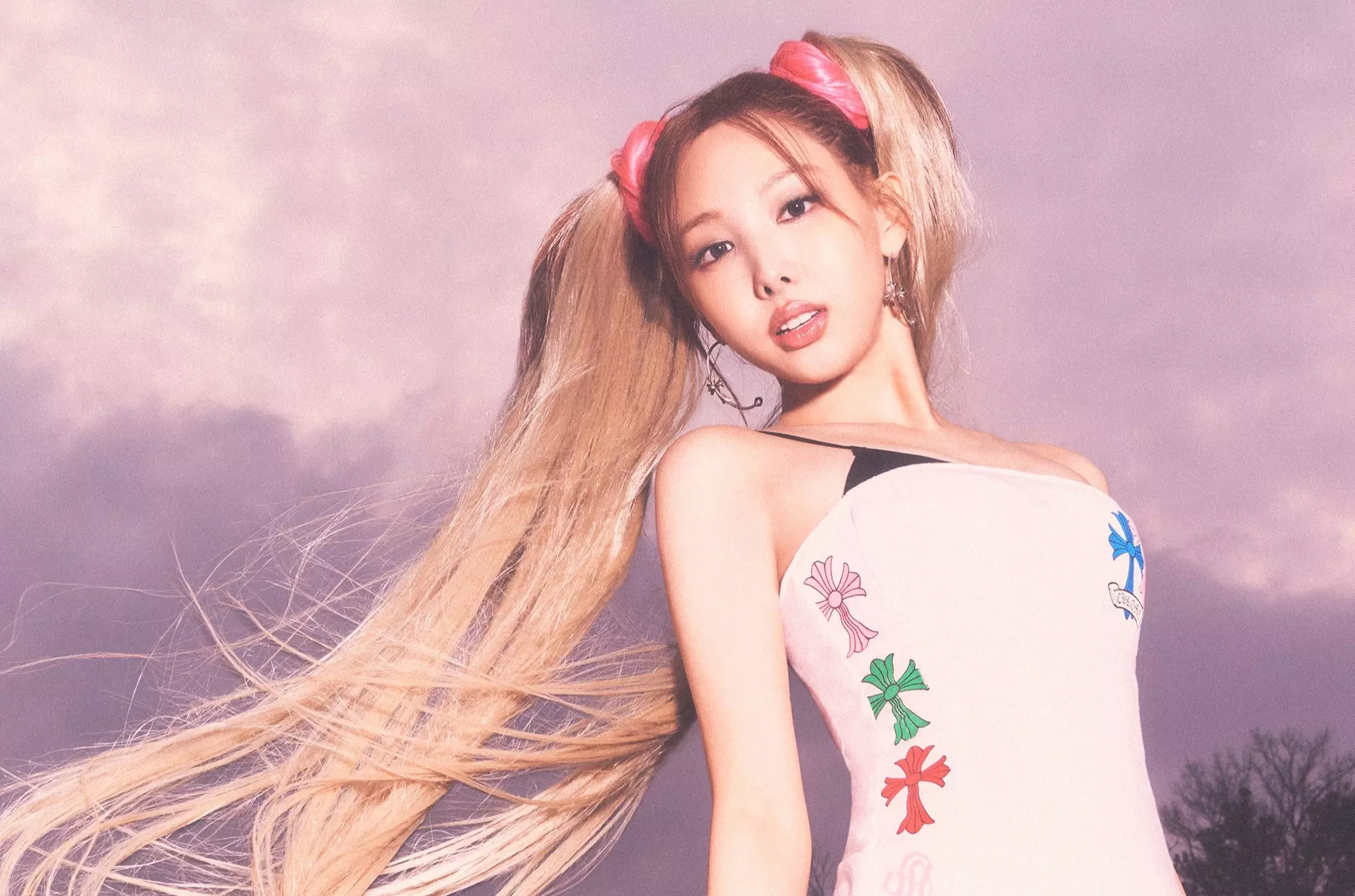
The ABCDs Of Nayeon: How The TWICE Member Embraced Her Authenticity On ‘NA’
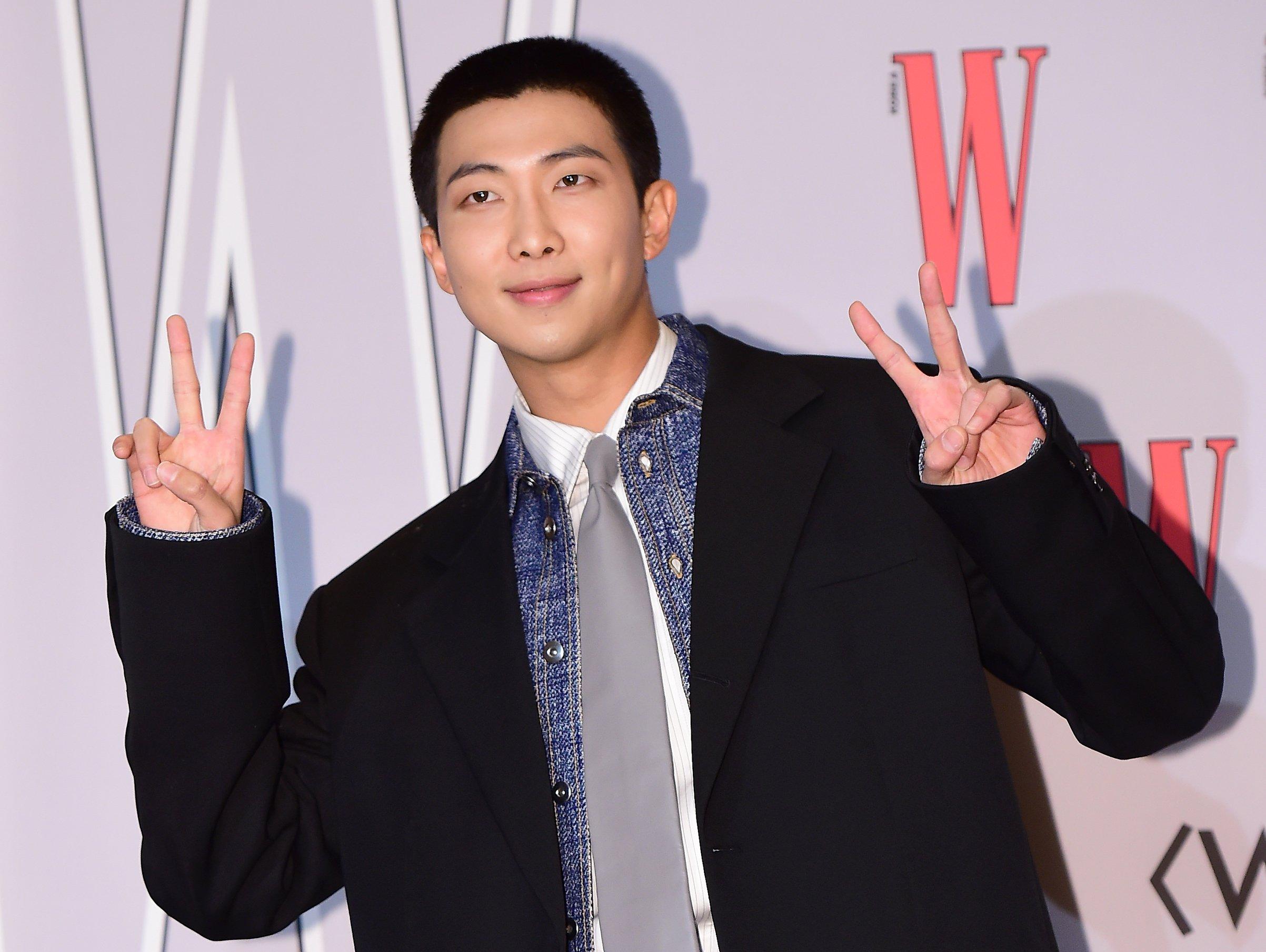
Photo: The Chosunilbo JNS/Imazins via Getty Images
news
Stream RM's New Album 'Right Place, Wrong Person': See The Tracklist, "LOST!" Video & Special Guests
The second solo album from BTS' RM further displays his knack for genre-bending experimentation, while also delving deeper into his vulnerable side. Listen to the new album here, and get to know the project's featured artists, tracklist and more.
As the world patiently awaits the return of BTS in full force, each member continues to deliver solo projects to show off their individual talents. And 18 months after his last album, RM is back.
With a discography that hops between pop, R&B, and hip-hop, RM returns to the spotlight with his second solo album, Right Place, Wrong Person. The project tells the relatable story of an individual who is a creature of habit, but slowly comes to find solace in foreign spaces.
Below, listen to RM's latest album, and discover more about how he's revealing a new side of his artistry with Right Place, Wrong Person.
The Tracklist
After RM's debut solo album, 2022's Indigo, had 10 tracks (including features from the likes of Erykah Badu, Anderson .Paak), he ups the tally with an 11-song tracklist this time around.
Here is the complete tracklist for Right Place, Wrong Person:
1. Right People, Wrong Place
2. Nuts
3. out of love
4. Domodachi (feat. Little Simz)
5. ? (Interlude)
6. Groin
7. Heaven
8. LOST!
9. Around the world in a day (feat. Moses Sumney)
10. ㅠㅠ (Credit Roll)
11. Come back to me
The Creative Visuals
Two weeks before the album dropped, he unveiled the music video for "Come Back to Me," the lead single from Right Place, Wrong Person. Directed by the critically acclaimed actor Lee Sung Jin, the music video narrates the tale of feeling like an outsider and yearning for a sense of belonging in unfamiliar surroundings.
Then, on the day Right Place, Wrong Person arrived, RM added to release-day excitement with another intriguing visual, this time for "LOST!" The five-minute clip sees RM as the star of "The Lost! Show," where he and a group endure an eerie whirlwind of scenarios they can't seem to get out of. It's equal parts dramatic and slapstick, and another clever display of RM's creative versatility.
Noteworthy Guests
The featured artists on Right Place, Wrong Person — British rapper Little Simz on "Domodachi" and art-pop artist Moses Sumney on "Around the world in a day" — underscore RM's ability to interlace his own musical style with artists from various genres.
The album also has some notable behind-the-scenes collaborators as well. Production credits include Kim Han-joo, keyboardist and vocalist from the South Korean rock band Silica Gel, on "LOST!" and GRAMMY-nominated jazz duo DOMi & JD Beck on "? (Interlude)."
On "Come back to me" — which RM initially debuted last August during a surprise performance at BTS bandmate Suga's encore concert in Seoul — he delves into the album's central theme of wanting to venture into unknown areas, but feeling the intense urge to stay with what's already known. The track was composed and arranged by OHHYUK from the South Korean indie-rock band Hyukoh, but also features credits from artists Kuo, JNKYRD, and San Yawn.
But no matter who RM is working with, his own talent and prowess as a creator always shines. Right Place, Wrong Person presents a diverse array of tracks marked by sheer vulnerability, honesty, and sensitivity — a masterful continuation of a remarkable solo journey.
K-Pop Summer 2024 Guide: ATEEZ, IU, TXT & More Live In Concert & On Tour
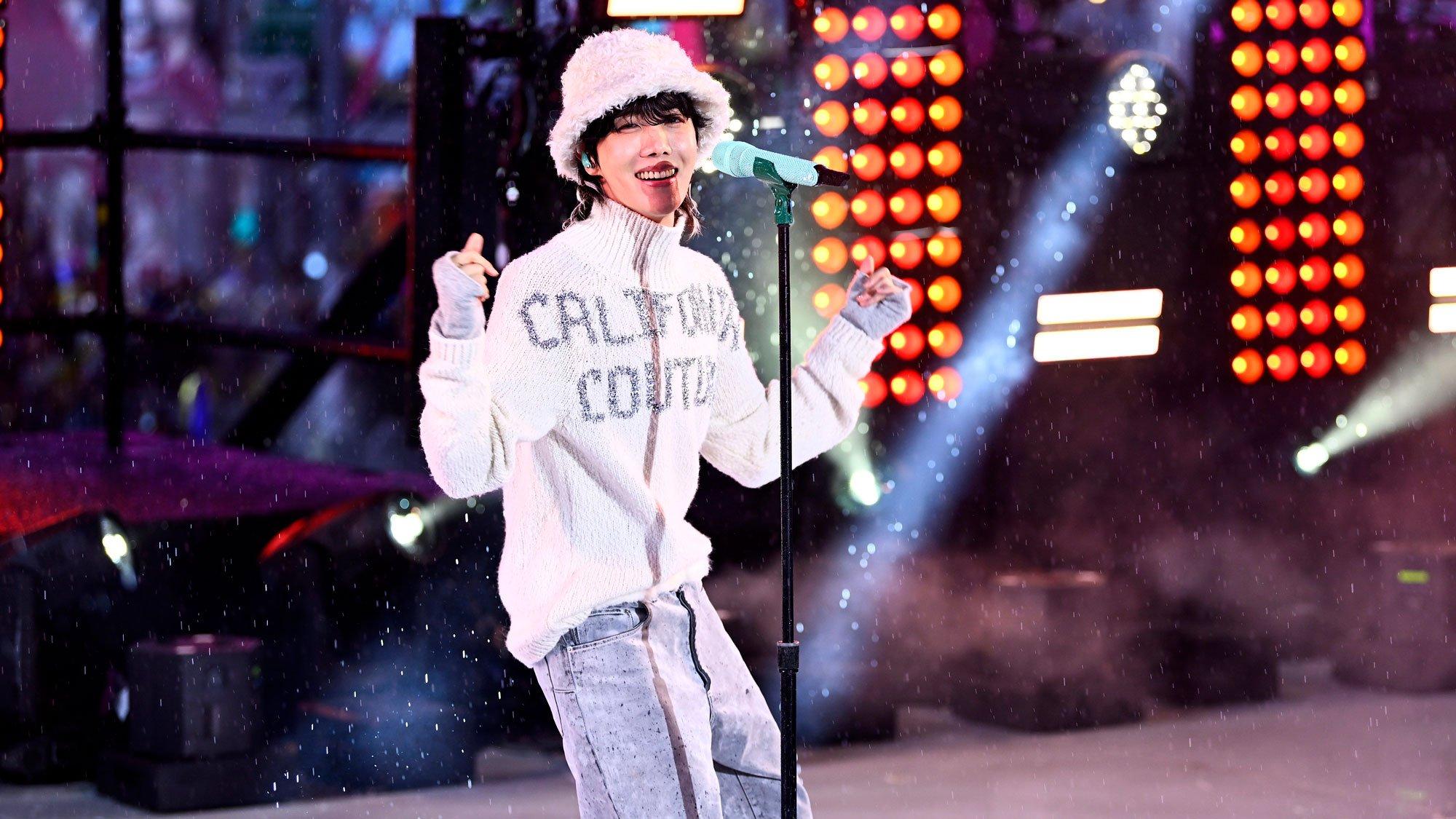
Photo: Roy Rochlin/Getty Images
feature
J-Hope's Road To 'Hope On The Street Vol.1,' From Falling Back In Love With Dance To Tying Together His Global Influences
After 11 years in BTS, j-hope revisits the passion that started it all: dancing. Ahead of his new docuseries and special album, 'Hope on the Street Vol.1,' discover the full-circle journey that brought him back to his roots.
"Just dance," j-hope commands on his 2018 BTS solo track.
For the international sensation, that's what it's always been about: expressing himself through movement. Now, 11 years after the launch of the seven-piece group, j-hope takes a U-turn to where it all began, before his K-pop idol days, street dancing between his hometown, Gwangju, and Seoul, South Korea.
Out March 29, j-hope's new special album, Hope on the Street Vol.1, is a musical ode to dancing that boasts a "vibrant collection of six tracks spanning a diverse array of sounds and moods that showcase j-hope's musical prowess and depth." Like j-hope's global perspective of dance, the EP expands borders and sounds, featuring appearances from HYBE labelmate HUH YUNJIN of LE SSERAFIM as well as American stars Nile Rodgers and Benny Blanco.
The mini-album will also be accompanied by a docuseries of the same name, premiering on Amazon Prime Video on March 28. According to a press statement, the six-part project will "highlight j-hope's story and love for dancing as he begins a new journey."
Ahead of Hope on the Street Vol.1's arrival, take a look at how j-hope's origins inspired the project — from his enrollment in a local dance academy to songwriting with J. Cole on their 2023 single, "on the street."
Finding Purpose In Dance
Long before becoming a global superstar, j-hope (born Jung Ho-seok) first discovered his love for dancing on the playground.
"The school I went to had a dance lesson for 30 minutes in the morning. They would play a dance video, and we would copy it as exercise," j-hope recalled in a 2013 interview for the BTS Japan Fanclub magazine. "My friends around me would praise me, saying, 'You're really good!'"
Eventually, those recess workouts turned into a passion. J-hope began practicing moves at home and freestyling at local talent shows. By the sixth grade, he told his parents he was serious about it, enrolling him in Gwangju's Joy Dance Academy.
While at the Academy, j-hope also joined the underground dance crew, NEURON, building a reputation under the name "Smile Hoya." Though he hasn't participated in the troupe since his pre-BTS days, he still recognizes it as one of the most influential parts of his career.
He'll even honor the crew with Hope on the Street, which includes a track called "NEURON," featuring Gaeko and yoonmirae. He will also return to Gwangju in the closing chapter of the docuseries.
It's not the first time j-hope shouted out Gwangju, either. His 2019 collab with Becky G, "Chicken Noodle Soup," paid tribute to his beloved upbringing: "From Gwangju, one gang of you-know-what/ Geumnam Chungjang Street, that's my Harlem." (The same track also foreshadowed his latest release: "Hope on the street, now it's my own way.")
Forging A New Life In Music With BTS
J-hope continued to have a diligent mindset as a trainee at Big Hit Entertainment. But as revealed in BTS' 2018 docuseries, Burn the Stage, training and dieting became emotionally and physically tolling. At one point, j-hope even considered leaving the group.
"I couldn't do things I wanted to do," he revealed during a 2021 You Quiz on the Block segment. "To be honest, I wanted to play games. I want to go out and hang out. I wanted to stay with my family. I had to give up a lot of things from that perspective."
The stress became so intense that he bought a one-way ticket to Gwangju. But ultimately, the brotherhood and love of music he formed with BTS gave him the courage to return: "I came back because I trusted you," j-hope recounted.
And they trusted him, too: "I told [Big Hit] that we needed Jung Ho-seok. We couldn't debut without him," RM responded. Meanwhile, Jung Kook delivered a tearful speech to encourage him to stay with the band.
The longer he stayed, the more j-hope began to love other sides of music, like producing and songwriting. Now, he has become one of the main writers for the group's tracks, alongside RM and Suga, and has co-penned all of his solo projects, including Hope on the Street.
Spreading His Wings With Two Full-Length Solo Projects
After nearly 10 projects with BTS, j-hope delivered his debut mixtape, Hope World, in March 2018.
"My fantasy had always been making a music video and performing with the music I had created. I wanted to put my own story to music and share it with the world," he told Time magazine upon Hope World’s release.
It's an introduction to j-hope the artist, inviting listeners to step into Hope World, a colorful kaleidoscope of different cultures and styles — something that has also been a key part of his dance journey.
Though, j-hope still wanted to dig deeper into his artistry. He developed his sound, becoming more vulnerable in his lyricism on tracks like 2020's "Outro: Ego." By 2022, he was ready to drop his first studio album, Jack in the Box.
Where Hope World showcases j-hope's dance performance, Jack in the Box highlights "my artistry in music." But Hope on the Street paints the full image of the phenom — part musician, part dancer.
Laying The Groundwork With "On The Street," Featuring J. Cole
One of j-hope's earliest musical influences was J. Cole. The rapper inspired j-hope's stage name and the title of his mixtape, which pays homage to 2011's Cole World. In 2022, j-hope honored Cole with "Born Singer," the BTS re-write of Cole's "Born Sinner." So, a celebratory meeting was in order when they were both scheduled to perform at Lollapalooza (where j-hope made history as the first Korean soloist to headline).
"[He's] my idol," j-hope said to Variety in 2023. Since they met, he "couldn't stop thinking about how great it would be if we could make music together." He reached out to J. Cole, and "on the street" was born.
As j-hope told Variety, the "street" concept became a metaphor for life: "The street is a place where people can actually encounter and feel real lives of people: a child's innocent mind; first encounter with someone and falling in love; someone in an urgent moment;" and so much more. It's the place where he learned to love dance — and where he grew a love for music and artists like J. Cole, who called their collab "a blessing" in the behind-the-scenes footage.
And thus, "on the street" became the springboard for his forthcoming project, Hope on the Street.
Unveiling A Docuseries And A Multi-Part Project
By the tail end of 2023, each member of BTS had enlisted in mandatory military service. But even during the septet's hiatus, j-hope managed to serve up a surprise announcement of Hope on the Street on Feb. 17 with a fitting montage of dance videos.
The joint docuseries and album follows j-hope's journey of self-discovery, accompanying his former instructor, Boogaloo Kin, as they dance their way through the streets of Osaka, Seoul, Paris, New York, and his hometown while meeting other dancers.
"Hope on the Street, my roots, the most important part of my life. This is how j-hope danced. I wanted to share this story with you," he said in an interview for the documentary.
After years of breaking records and making history as a member of BTS, it was "a chance to look back on my life," he explained in another trailer. "I realized the answer was in song and dance."
Culminating j-hope's skills in both art forms, Hope on the Street is a love letter to everything that's made him who he is today — and proof he'll never forget it.
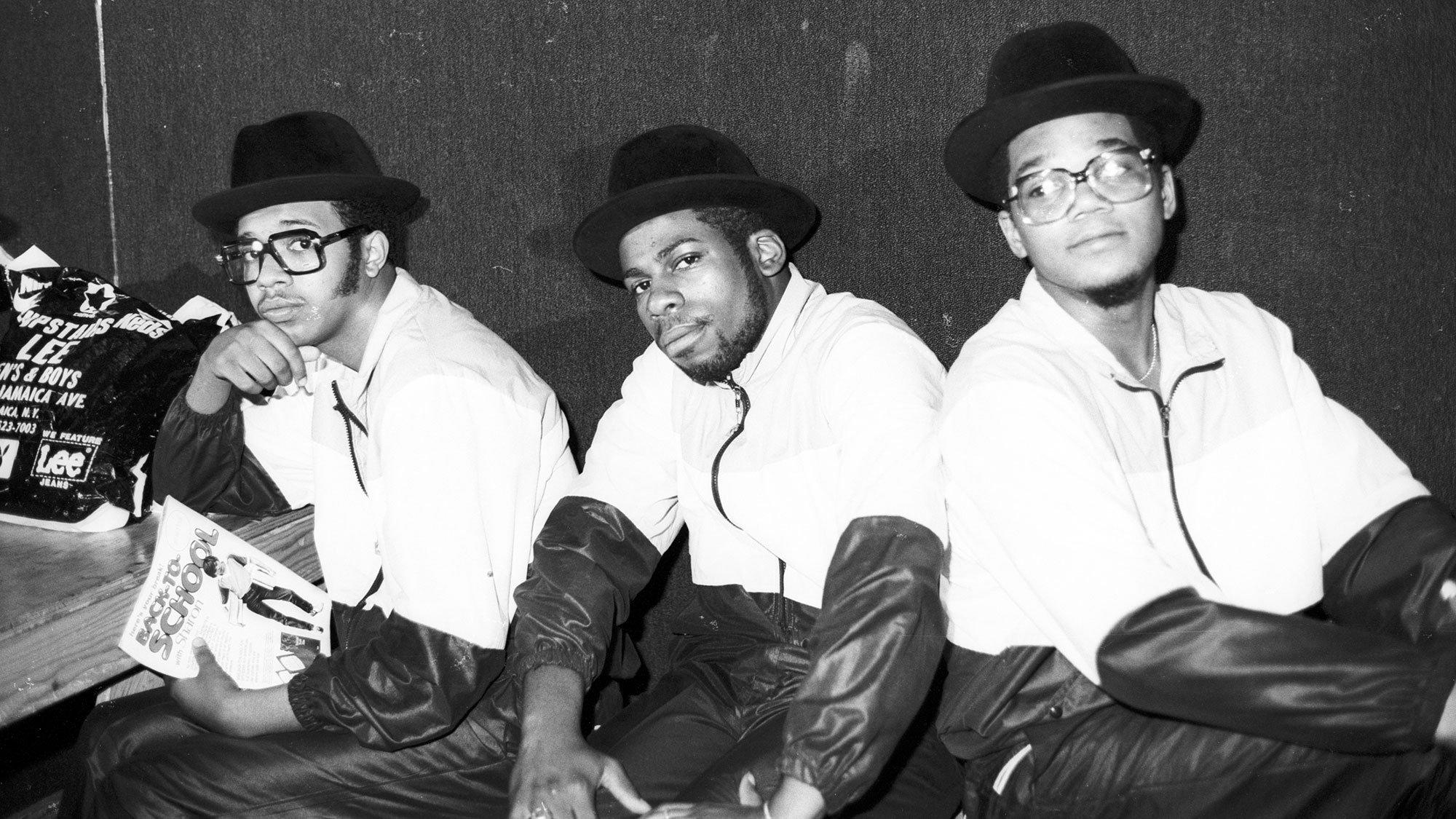
Photo: Michael Ochs Archives/Getty Images
feature
'Run-DMC' At 40: The Debut Album That Paved The Way For Hip-Hop's Future
Forty years ago, Run-DMC released their groundbreaking self-titled album, which would undeniably change the course of hip-hop. Here's how three guys from Queens, New York, defined what it meant to be "old school" with a record that remains influential.
"You don't know that people are going to 40 years later call you up and say, ‘Can you talk about this record from 40 years ago?’"
That was Cory Robbins, former president of Profile Records, reaction to speaking to Grammy.com about one of the first albums his then-fledgling label released. Run-DMC’s self-titled debut made its way into the world four decades ago this week on March 27, 1984 and established the group, in Robbins’ words, "the Beatles of hip-hop."
Rarely in music, or anything else, is there a clear demarcation between old and new. Styles change gradually, and artistic movements usually get contextualized, and often even named, after they’ve already passed from the scene. But Run-DMC the album, and the singles that led up to it, were a definitive breaking point. Rap before it instantly, and eternally, became “old school.” And three guys from Hollis, Queens — Joseph "Run" Simmons, Jason "Jam Master Jay" Mizell, Darryl "D.M.C." McDaniels — helped turn a burgeoning genre on its head.
What exactly was different about Run-DMC? Some of the answers can be glimpsed by a look at the record’s opening song. "Hard Times" is a cover of a Kurtis Blow track from his 1980 debut album. The connection makes sense. Kurtis and Run’s older brother Russell Simmons met in college, and Russell quickly became the rapper’s manager. That led to Run working as Kurtis’ DJ. Larry Smith, who produced Run-DMC, even played on Kurtis’ original version of the song.
But despite those tie-ins, the two takes on "Hard Times" are night and day. Kurtis Blow’s is exactly what rap music was in its earliest recorded form: a full band playing something familiar (in this case, a James Brown-esque groove, bridge and percussion breakdown inclusive.)
What Run-DMC does with it is entirely different. The song is stripped down to its bare essence. There’s a drum machine, a sole repeated keyboard stab, vocals, and… well, that’s about it. No solos, no guitar, no band at all. Run and DMC are trading off lines in an aggressive near-shout. It’s simple and ruthlessly effective, a throwback to the then-fading culture of live park jams. But it was so starkly different from other rap recordings of the time, which were pretty much all in the style of Blow’s record, that it felt new and vital.
"Production-wise, Sugar Hill [the record label that released many key early rap singles] built themselves on the model of Motown, which is to say, they had their own production studios and they had a house band and they recorded on the premises," explains Bill Adler, who handled PR for Run-DMC and other key rap acts at the time.
"They made magnificent records, but that’s not how rap was performed in parks," he continues. "It’s not how it was performed live by the kids who were actually making the music."
Run-DMC’s musical aesthetic was, in some ways, a lucky accident. Larry Smith, the musician who produced the album, had worked with a band previously. In fact, the reason two of the songs on the album bear the subtitle "Krush Groove" is because the drum patterns are taken from his band Orange Krush’s song “Action.”
Read more: Essential Hip-Hop Releases From The 1970s: Kurtis Blow, Grandmaster Flash, Sugarhill Gang & More
But by the time sessions for Run-DMC came around, the money had run out and, despite his desire to have the music done by a full band, Smith was forced to go without them and rely on a drum machine.
His artistic partner on the production side was Russell Simmons. Simmons, who has been accused over the past seven years of numerous instances of sexual assault dating back decades, was back in 1983-4 the person providing the creative vision to match Smith’s musical knowledge.
Orange Krush’s drummer Trevor Gale remembered the dynamic like this (as quoted in Geoff Edgers’ Walk This Way: Run-DMC, Aerosmith, and the Song that Changed American Music Forever): “Larry was the guy who said, 'Play four bars, stop on the fifth bar, come back in on the fourth beat of the fifth bar.' Russell was the guy that was there that said, ‘I don’t like how that feels. Make it sound like mashed potato with gravy on it.’”
Explore The Artists Who Changed Hip-Hop
50 Artists Who Changed Rap: Jay-Z, The Notorious B.I.G., Dr. Dre, Nicki Minaj, Kendrick Lamar, Eminem & More
Hip-Hop Just Rang In 50 Years As A Genre. What Will Its Next 50 Years Look Like?

Watch Outkast Humbly Win Album Of The Year For 'Speakerboxxx/The Love Below' In 2004 | GRAMMY Rewind
A Brief History Of Hip-Hop At 50: Rap's Evolution From A Bronx Party To The GRAMMY Stage
GRAMMY Museum To Celebrate 50 Years Of Hip-Hop With 'Hip-Hop America: The Mixtape Exhibit' Opening Oct. 7

Watch Eminem Show Love to Detroit And Rihanna During Best Rap Album Win In 2011 | GRAMMY Rewind
Listen To GRAMMY.com's 50th Anniversary Of Hip-Hop Playlist: 50 Songs That Show The Genre's Evolution
14 New Female Hip-Hop Artists To Know In 2023: Lil Simz, Ice Spice, Babyxsosa & More
6 Artists Expanding The Boundaries Of Hip-Hop In 2023: Lil Yachty, McKinley Dixon, Princess Nokia & More
Watch 41 Bring The Hype With A Cover Of DMX's Hit "Party Up (Up In Here)" | Hip-Hop Re:Defined
The 10 Most Controversial Samples In Hip-Hop History

Watch Lauryn Hill Win Best New Artist At The 1999 GRAMMYs | GRAMMY Rewind
19 Concerts And Events Celebrating The 50th Anniversary Of Hip-Hop
Founding Father DJ Kool Herc & First Lady Cindy Campbell Celebrate Hip-Hop’s 50th Anniversary
A Guide To New York Hip-Hop: Unpacking The Sound Of Rap's Birthplace From The Bronx To Staten Island
A Guide To Southern California Hip-Hop: Definitive Releases, Artists & Subgenres From L.A. & Beyond
10 Crucial Hip-Hop Albums Turning 30 In 2023: 'Enter The Wu-Tang,' 'DoggyStyle,' 'Buhloone Mindstate' & More
The Nicki Minaj Essentials: 15 Singles To Showcase Her Rap And Pop Versatility
11 Hip-Hop Subgenres To Know: From Jersey Club To G-Funk And Drill
5 Essential Hip-Hop Releases From The 2020s: Drake, Lil Baby, Ice Spice, 21 Savage & More
A Guide To Southern Hip-Hop: Definitive Releases, Artists & Subgenres From The Dirty South
A Guide To Bay Area Hip-Hop: Definitive Releases, Artists & Subgenres From Northern California
A Guide To Texas Hip-Hop: Definitive Releases, Artists & Events

Ludacris Dedicates 2007 Best Rap Album GRAMMY To His Dad | GRAMMY Rewind
Unearthing 'Diamonds': Lil Peep Collaborator ILoveMakonnen Shares The Story Behind Their Long-Awaited Album
10 Bingeworthy Hip-Hop Podcasts: From "Caresha Please" To "Trapital"
Revisiting 'The Miseducation Of Lauryn Hill': Why The Multiple GRAMMY-Winning Record Is Still Everything 25 Years Later
Watch Asha Imuno Personalize Kendrick Lamar's "i" With A Sparkling New Chorus | Hip-Hop Re:Defined
10 Must-See Exhibitions And Activations Celebrating The 50th Anniversary Of Hip-Hop
5 Artists Showing The Future Of AAPI Representation In Rap: Audrey Nuna, TiaCorine & More
'Invasion of Privacy' Turns 5: How Cardi B's Bold Debut Album Redefined Millennial Hip-Hop
10 Songs That Show Doja Cat’s Rap Skills: From "Vegas" To "Tia Tamara" & "Rules"
Watch Olen Put A Dreamy, Melodic Spin On Childish Gambino's "Heartbeat" | Hip-Hop Re:Defined
6 Must-Watch Hip-Hop Documentaries: 'Hip-Hop x Siempre,' 'My Mic Sounds Nice' & More...
Essential Hip-Hop Releases From The 2010s: Ye, Cardi B, Kendrick Lamar & More
6 Takeaways From Netflix's "Ladies First: A Story Of Women In Hip-Hop"
How Drake & 21 Savage Became Rap's In-Demand Duo: A Timeline Of Their Friendship, Collabs, Lawsuits And More
5 Takeaways From Travis Scott's New Album 'UTOPIA'
Essential Hip-Hop Releases From The 2000s: T.I., Lil Wayne, Kid Cudi & More
Songbook: How Jay-Z Created The 'Blueprint' For Rap's Greatest Of All Time
Ladies First: 10 Essential Albums By Female Rappers

How Megan Thee Stallion Turned Viral Fame Into A GRAMMY-Winning Rap Career | Black Sounds Beautiful
How Hip-Hop Took Over The 2023 GRAMMYs, From The Golden Anniversary To 'God Did'
5 Things We Learned At "An Evening With Chuck D" At The GRAMMY Museum
Remembering De La Soul’s David Jolicoeur, a.k.a. Dave and Trugoy the Dove: 5 Essential Tracks
Catching Up With Hank Shocklee: From Architecting The Sound Of Public Enemy To Pop Hits & The Silver Screen
Meet The First-Time GRAMMY Nominee: GloRilla On Bonding with Cardi B, How Faith And Manifestation Helped Her Achieve Success
Hip-Hop's Secret Weapon: Producer Boi-1da On Working With Kendrick, Staying Humble And Doing The Unorthodox
Essential Hip-Hop Releases From The 1990s: Snoop Dogg, Digable Planets, Jay-Z & More
10 Albums That Showcase The Deep Connection Between Hip-Hop And Jazz: De La Soul, A Tribe Called Quest, Kendrick Lamar & More
Hip-Hop Education: How 50 Years Of Music & Culture Impact Curricula Worldwide
Women In Hip-Hop: 7 Trailblazers Whose Behind-The-Scenes Efforts Define The Culture

Watch Flavor Flav Crash Young MC's Speech After "Bust A Move" Wins In 1990 | GRAMMY Rewind
Essential Hip-Hop Releases From The 1980s: Slick Rick, RUN-D.M.C., De La Soul & More
Lighters Up! 10 Essential Reggae Hip-Hop Fusions

How Lil Nas X Turned The Industry On Its Head With "Old Town Road" & Beyond | Black Sounds Beautiful
9 Teen Girls Who Built Hip-Hop: Roxanne Shante, J.J. Fadd, Angie Martinez & More
Essential Hip-Hop Releases From The 1970s: Kurtis Blow, Grandmaster Flash, Sugarhill Gang & More
Killer Mike Says His New Album, 'Michael,' Is "Like A Prodigal Son Coming Home"
5 Takeaways From 'TLC Forever': Left-Eye's Misunderstood Reputation, Chilli's Motherhood Revelation, T-Boz's Health Struggles & More
Watch Eva B Perform "Sunrise In Lyari" Through The Streets Of Pakistan | Global Spin
It wasn’t just the music that set Run-DMC apart from its predecessors. Their look was also starkly different, and that influenced everything about the group, including the way their audience viewed them.
Most of the first generation of recorded rappers were, Bill Adler remembers, influenced visually by either Michael Jackson or George Clinton and Parliament-Funkadelic. Run-DMC was different.
"Their fashion sense was very street oriented," Adler explains. "And that was something that emanated from Jam Master Jay. Jason just always had a ton of style. He got a lot of his sartorial style from his older brother, Marvin Thompson. Jay looked up to his older brother and kind of dressed the way that Marvin did, including the Stetson hat.
"When Run and D told Russ, Jason is going to be our deejay, Russell got one look at Jay and said, ‘Okay, from now on, you guys are going to dress like him.’"
Run, DMC, and Jay looked like their audience. That not only set them apart from the costumed likes of Grandmaster Flash and the Furious Five, it also cemented the group’s relationship with their listeners.
"When you saw Run-DMC, you didn’t see celebrity. You saw yourself," DMC said in the group’s recent docuseries.
Read more: 20 Iconic Hip-Hop Style Moments: From Run-D.M.C. To Runways
Another thing that set Run-DMC (the album) and Run-DMC (the group) apart from what came before was the fact that they released a cohesive rap album. Nine songs that all belonged together, not just a collection of already-released singles and some novelties. Rappers had released albums prior to Run-DMC, but that’s exactly what they were: hits and some other stuff — sung love ballads or rock and roll covers, or other experiments rightfully near-forgotten.
"There were a few [rap] albums [at the time], but they were pretty crappy. They were usually just a bunch of singles thrown together," Cory Robbins recalls.
Not this album. It set a template that lasted for years: Some social commentary, some bragging, a song or two to show off the DJ. A balance of records aimed at the radio and at the hard-core fans. You can still see traces of Run-DMC in pretty much every rap album released today.
Listeners and critics reacted. The album got a four-star review in Rolling Stone with “the music…that backs these tracks is surprisingly varied, for all its bare bones” and an A minus from Robert Christgau who claimed “It's easily the canniest and most formally sustained rap album ever.” Just nine months after its release, Run-DMC was certified gold, the first rap LP ever to earn that honor. "Rock Box" also single-handedly invented rap-rock, thanks to Eddie Martinez’s loud guitars.
There is another major way in which the record was revolutionary. The video for "Rock Box" was the first rap video to ever get into regular rotation on MTV and, the first true rap video ever played on the channel at all, period. Run-DMC’s rise to MTV fame represented a significant moment in breaking racial barriers in mainstream music broadcasting.
"There’s no overstating the importance of that video," Adler tells me. vIt broke through the color line at MTV and opened the door to a cataclysmic change."
"Everybody watched MTV forty years ago," Robbins agrees. "It was a phenomenal thing nationwide. Even if we got three or four plays a week of ‘Rock Box’ on MTV, that did move the needle."
All of this: the new musical style, the relatable image, the MTV pathbreaking, and the attendant critical love and huge sales (well over 10 times what their label head was expecting when he commissioned the album from a reluctant Russell Simmons — "I hoping it would sell thirty or forty thousand," Robbins says now): all of it contributed to making Run-DMC what it is: a game-changer.
"It was the first serious rap album," Robbins tells me. And while you could well accuse him of bias — the group making an album at all was his idea in the first place — he’s absolutely right.
Run-DMC changed everything. It split the rap world into old school and new school, and things would never be the same.
Perhaps the record’s only flaw is one that wouldn’t be discovered for years. As we’re about to get off the phone, Robbins tells me about a mistake on the cover, one he didn’t notice until the record was printed and it was too late.
There was something (Robbins doesn’t quite recall what) between Run and DMC in the cover photo. The art director didn’t like it and proceeded to airbrush it out. But he missed something. On the vinyl, if you look between the letters "M" and "C,", you can see DMC’s disembodied left hand, floating ghost-like in mid-air. While it was an oversight, it’s hard not to see this as a sign, a sort of premonition that the album itself would hang over all of hip-hop, with an influence that might be hard to see at first, but that never goes away.
A Guide To New York Hip-Hop: Unpacking The Sound Of Rap's Birthplace From The Bronx To Staten Island
